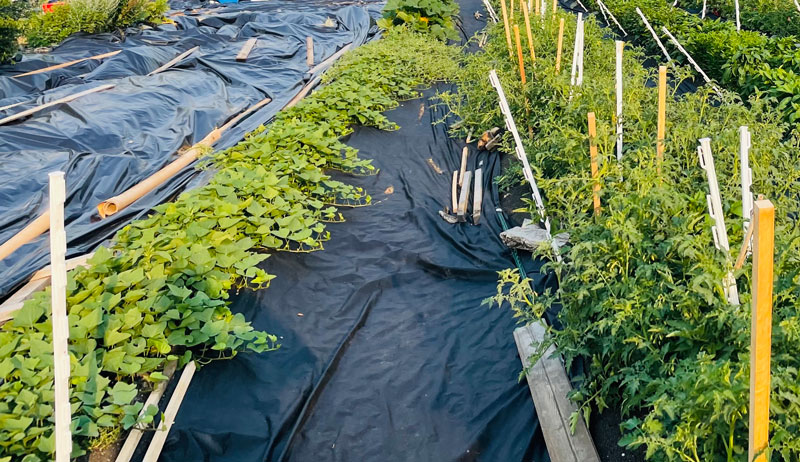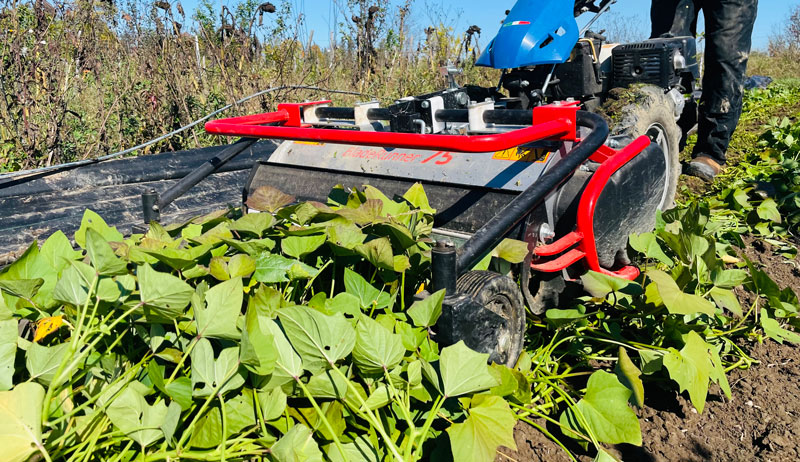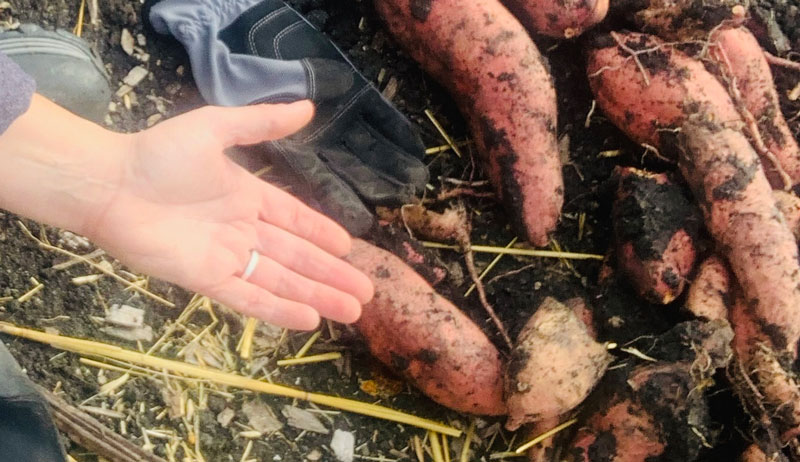
Growing sweet potatoes a colder-climate garden requires some attention to detail. This food plant is popular in Polynesia where the temperature and humidity of summer helps it yield copiously and cure generously. Likewise, production in the U.S. is primarily in more southern states.
This delicious tuber is actually native to tropical South America. And its journey to Polynesia (way before the “Age of Discovery”) is something of a delicious mystery!
In the American Northeast, Europe, Canada and more temperate climates, we must mimic the conditions this tuber enjoys. Specifically, sweet potatoes require heat and moisture all season. If we provide this, the plants will generate the quantity and quality we need for sweet potatoes to grow as a steadfast crop in the garden or on the farm.
Read more: Sweet potatoes and yams—how are they different?
Growing & Transplanting Slips
First, like many crops whose days to maturity is longer than the average frost-free period in your region, you should transplant sweet potatoes. Sweet potato “slips” can be produced from pieces of last year’s garden harvest or purchased from a nursery that grows out these starts.
A potato is grown from pieces of last year’s tuber, cut to have a minimum of three “eyes.” But a sweet potato slip is a shoot that sprouts from the original sweet potato tuber. This shoot can be transplanted into a 3-inch pot and grown out to be a transplant.
You should plant sweet potato slips in the garden after the last frost date has passed. Plant sweet potatoes in raised beds with good drainage and rich, well-worked soil.
Crops that yield below ground need loose soil to grow in. If the soil is loose, the potatoes will grow to be more uniform in shape. Sweet potatoes can grow to look like every organ in the body if the conditions are not right! Some of these shapes can be quite hilarious.

Planting Out
We plant our sweet potatoes in raised beds with two runs of drip tape on either side of a single row of plants. We plant the slips about 20 inches apart in our 48-inch Permabeds.
The vines will fill the entire bed and path, so we use Alternate Maturity Patterning (a method I detail in my book, The Permaculture Market Garden) to ensure the beds adjacent have early maturing crops that won’t be in our way come harvest time.
Next, we cover each side of the bed with weed barrier up to the row of plants. This will preserve moisture and provide heat. We use this zipper bed technique instead of planting them in plastic mulch. It allows us to keep the weed barrier intact (without cutting holes) and reusable for many crops over many years.
We enjoy the added heat, moisture retention and weed suppression this provides. With so many jobs on the farm, this is a win in a northern climate.

Frost Signals Harvest Time
Using floating row cover can also help to keep frost away and add extra heat in the early season.
Harvest sweet potatoes from the garden when the threat of frost is imminent. We pull back the weed barrier, pull out the drip tape, then mow the sweet potato leaves with a flail mower on our walking tractor.
For small plots, such as the Suburban Edible Ecosystem in Winnipeg, we pull up the vines by hand.
Next, we start digging. Use a garden fork, but start far out from the center of the planting to avoid cutting and breaking the tubers. That being said, most cuts and nicks can be cured properly ,and these tubers will still store decently. After curing they will be much firmer.
If some didn’t make the cut (soft or rotten), you should toss these.

Curing Sweet Potatoes
Curing sweet potatoes requires high humidity and high temperatures. One method is to put them in a humid greenhouse in harvest crates and cover them with weed barrier.
We increase the humidity by running a hose underneath the weed barrier, placing the crates on top of this weed barrier. Then we run another layer of weed barrier over the crates. It’s similar to how gardeners will often grow leafy vegetables in reusable grocery bags with holes punched in them. Placed in a sunny location, the plants enjoy a kind of greenhouse effect.
Primary curing takes about two weeks at 85 degrees F and 90 percent relative humidity. Further curing occurs by keeping the tubers at about 55 degrees F for an additional five to six weeks.
Once fully cured the sweet potatoes will store up to six to eight months in a cool, ventilated and dark space with about 50-60 percent relative humidity. A pantry situation works well, as would a drier root cellar.
In addition to winter storage, curing also helps make the sweet potatoes “sweet.” A sweet potato eaten fresh from the field isn’t actually all that tasty. But wait, be patient and enjoy the sweet treats all winter!




